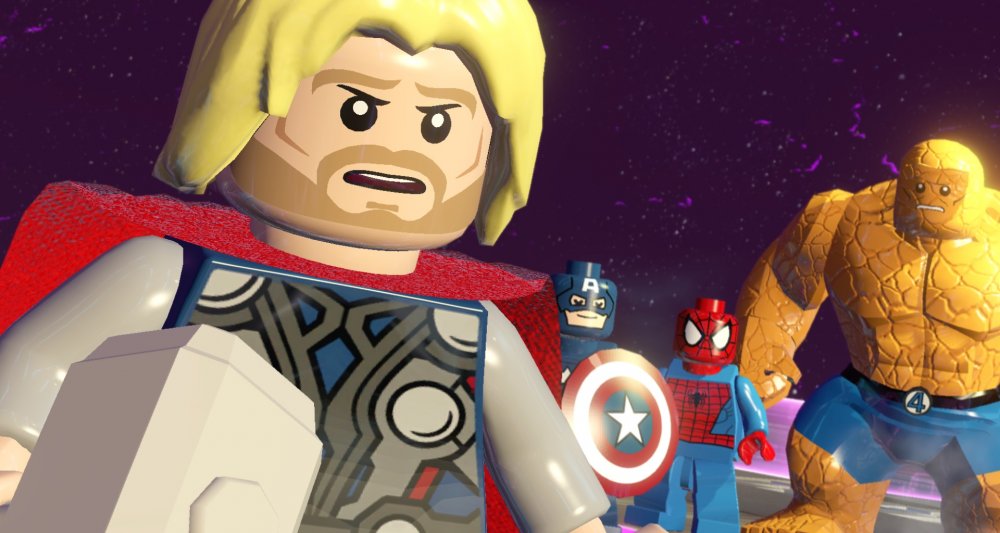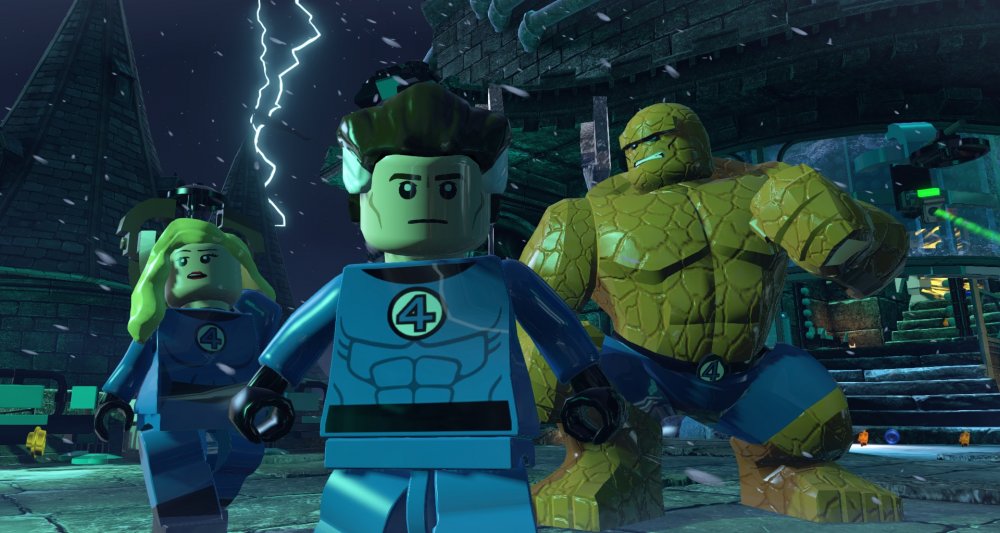

For a good portion of the LEGO video game series lifespan, the experience was about the same from game to game. This was both a blessing and a curse. On the one hand, if you enjoyed busting LEGO bad guys into thousands of pieces and solving a few puzzles while reliving iconic pop culture franchises like Star Wars and Harry Potter, you knew what to expect. On the other hand, if you disliked annoying camera shenanigans, bad platforming elements, and maddening bugs, you also knew what to expect.
Luckily for us gamers, the most recent LEGO games have moved beyond merely good to almost great. LEGO Batman 2 gave us a plot unique to the game, voice acting, a host of Batsuits, and a League of guest stars. LEGO Lord of the Rings featured an expansive world, intricate co-op, and the most cinematic feel of a LEGO game yet. Both of these are head and shoulders above previous LEGO titles. Now, LEGO Marvel Super Heroes has arrived, and it continues the upward trend, bettering its predecessors to achieve true greatness.

By far, the best thing LEGO Marvel Super Heroes has going for it is the massive selection of characters. The LEGO versions of Indiana Jones, Harry Potter, and even Lord of the Rings had plenty of fun heroes, but there were always a few missions where someone ended up playing as Sallah, Fang, or other, shall we say, less popular LEGO characters. LEGO Batman 2 fixed this problem by giving players access to the Justice League and a host of other DC heroes and villains. The problem with that latter game, though, was the drought of characters until the last quarter or so of the campaign. In our house, there are always arguments over who gets to play the “coolest” character, and I usually lose. I speculate this happens in most households, particularly those with younger kids.
LEGO Marvel Super Heroes fixes this issue in grand fashion. By the time you are only a few missions into the story, you will have had access to dozens of super heroes. The first few missions wisely keep the focus on Iron Man, the Hulk, Captain America, and other members of the Avengers cinematic universe. But soon, Spider-Man and Wolverine show up, alongside the Fantastic Four and more. (It truly makes me long for a unified movie continuity free from studio rights, but I digress.) The only trouble you’ll have with deciding which player gets what hero will be curbing your desire to play them all! It’s not all A-listers, either; I am pretty sure I spotted Ego, the Living Planet on the main title screen, an obscure reference for sure. The game is chock full of awesome heroes, and I can’t imagine anyone’s favorite is missing.

The powers of each hero have been interpreted fairly well in LEGO form. Powers repeat occasionally, but that’s the nature of the game. Cyclops and the Human Torch can melt through gold barriers. The Hulk and the Thing can bash through walls and pull heavy objects. Thor and Storm can each summon electricity to attack foes or power up machinery. The Invisible Woman and Jean Grey can move objects and create force fields. Black Widow and Iron Man can activate computer puzzles to solve. There isn’t a huge variety of powers, but they all feel authentic to the characters, particularly when put together in different combinations.
One minor issue with the use of powers and abilities are the hints that pop up from time to time. An example would be an early X-Men mission, with Cyclops and Jean Grey. There was a beam blocking our progress, and the hint called for using Captain America’s absent shield. It took us a moment to realize that Jean’s force field could deflect the beam just as Cap’s shield would. Certain levers call for “web-slinging” characters, but Black Widow’s cable or even Mister Fantastic’s arms will work just as well. Speaking of the leader of the Fantastic Four, he easily gets the award for most unique hero. His malleable body can be formed into screwdrivers, cranes, parachutes, a water pump, and more. It’s hilarious to watch and makes the F4 levels really stand out from the rest.
The core LEGO experience remains largely unchanged from that of the recent games. The trend for more puzzles and interesting boss battles and less minion fighting and platforming continues. There are still plenty of LEGO objects to bash into studs and collect, secret areas that can only be reached with different characters in freeplay mode, and enough collectables to satisfy the most OCD gamer. The co-op aspects remain solid, with two player local drop in/out and the choice of a dynamic or vertical splitscreen. I do miss the cunningly designed and extremely cooperative shadow world/real world sequences of LEGO Lord of the Rings, but there is still a good deal of teamwork required throughout the game.
It might possibly be my fanboy tendencies, but LEGO Marvel Super Heroes is easily my favorite game in the series, and I believe it is the best of the lot from a game design perspective as well. There are a few quirks with the camera here and there, but overall the game feels polished and complete, more so than some of the more pedestrian LEGO games of the past. Whether we’ve reached the pinnacle of LEGO potential remains to be seen, but it’s certainly an enjoyable gaming experience, especially for Marvel fans. Humor, cool characters, and compelling LEGO puzzles have always been a recipe for great gaming fun, and LEGO Marvel Super Heroes does not disappoint.
The Co-Optimus review of LEGO Marvel Super Heroes is based on the Xbox 360 version of the game. A copy of the game was provided by the publisher for review purposes.